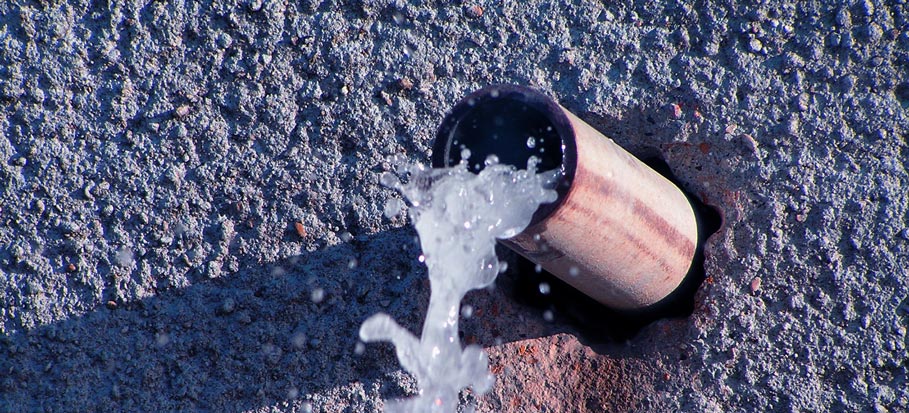6 Ways to Discover Concealed Water Leakages in Your Residence
6 Ways to Discover Concealed Water Leakages in Your Residence
Blog Article
We've stumbled on this great article on Hacks to detect leaks down the page on the internet and think it made perfect sense to relate it with you on my blog.

Early discovery of dripping water lines can minimize a potential calamity. Some tiny water leakages might not be visible.
1. Examine the Water Meter
Every house has a water meter. Checking it is a surefire manner in which assists you find leaks. For starters, turn off all the water sources. Make certain no one will certainly purge, utilize the faucet, shower, run the cleaning maker or dishwashing machine. From there, go to the meter and also watch if it will alter. Considering that no one is utilizing it, there must be no activities. If it moves, that shows a fast-moving leakage. Furthermore, if you find no changes, wait an hour or 2 as well as examine back once again. This implies you may have a slow leakage that can also be underground.
2. Check Water Usage
Analyze your water expenses and track your water intake. As the one paying it, you need to observe if there are any kind of inconsistencies. If you identify sudden changes, despite your consumption coinciding, it means that you have leaks in your plumbing system. Bear in mind, your water bill ought to drop under the same variety each month. An abrupt spike in your bill indicates a fast-moving leakage.
A steady rise every month, even with the same behaviors, reveals you have a slow-moving leakage that's additionally slowly intensifying. Call a plumber to thoroughly inspect your building, specifically if you really feel a cozy location on your floor with piping underneath.
3. Do a Food Coloring Test
When it comes to water consumption, 30% comes from toilets. If the color somehow infiltrates your dish throughout that time without flushing, there's a leak in between the storage tank as well as dish.
4. Asses Exterior Lines
Don't forget to examine your exterior water lines too. Must water permeate out of the link, you have a loosened rubber gasket. One small leakage can throw away lots of water and increase your water costs.
5. Examine and Examine the Situation
House owners need to make it a behavior to inspect under the sink counters as well as also inside cupboards for any kind of bad odor or mold growth. These 2 warnings show a leakage so timely interest is needed. Doing routine assessments, also bi-annually, can conserve you from a significant problem.
Check for discolorations as well as weakening as a lot of pipelines and appliances have a life expectations. If you think dripping water lines in your plumbing system, do not wait for it to intensify.
Early discovery of dripping water lines can minimize a prospective catastrophe. Some tiny water leaks may not be noticeable. Checking it is a guaranteed method that aids you find leaks. One small leak can waste heaps of water as well as spike your water expense.
If you think leaking water lines in your plumbing system, do not wait for it to escalate.
WARNING SIGNS OF WATER LEAKAGE BEHIND THE WALL
PERSISTENT MUSTY ODORS
As water slowly drips from a leaky pipe inside the wall, flooring and sheetrock stay damp and develop an odor similar to wet cardboard. It generates a musty smell that can help you find hidden leaks.
MOLD IN UNUSUAL AREAS
Mold usually grows in wet areas like kitchens, baths and laundry rooms. If you spot the stuff on walls or baseboards in other rooms of the house, it’s a good indicator of undetected water leaks.
STAINS THAT GROW
When mold thrives around a leaky pipe, it sometimes takes hold on the inside surface of the affected wall. A growing stain on otherwise clean sheetrock is often your sign of a hidden plumbing problem.
PEELING OR BUBBLING WALLPAPER / PAINT
This clue is easy to miss in rooms that don’t get much use. When you see wallpaper separating along seams or paint bubbling or flaking off the wall, blame sheetrock that stays wet because of an undetected leak.
BUCKLED CEILINGS AND STAINED FLOORS
If ceilings or floors in bathrooms, kitchens or laundry areas develop structural problems, don’t rule out constant damp inside the walls. Wet sheetrock can affect adjacent framing, flooring and ceilings.
https://www.servicemasterbyzaba.com/blog/how-to-detect-water-leakage-in-walls/

I am very focused on Locating water leaks and I really hope you liked the entire blog entry. Are you aware of anybody else who is very much interested in Locating water leaks? Why not promote it. Many thanks for taking the time to read it.
Report this page